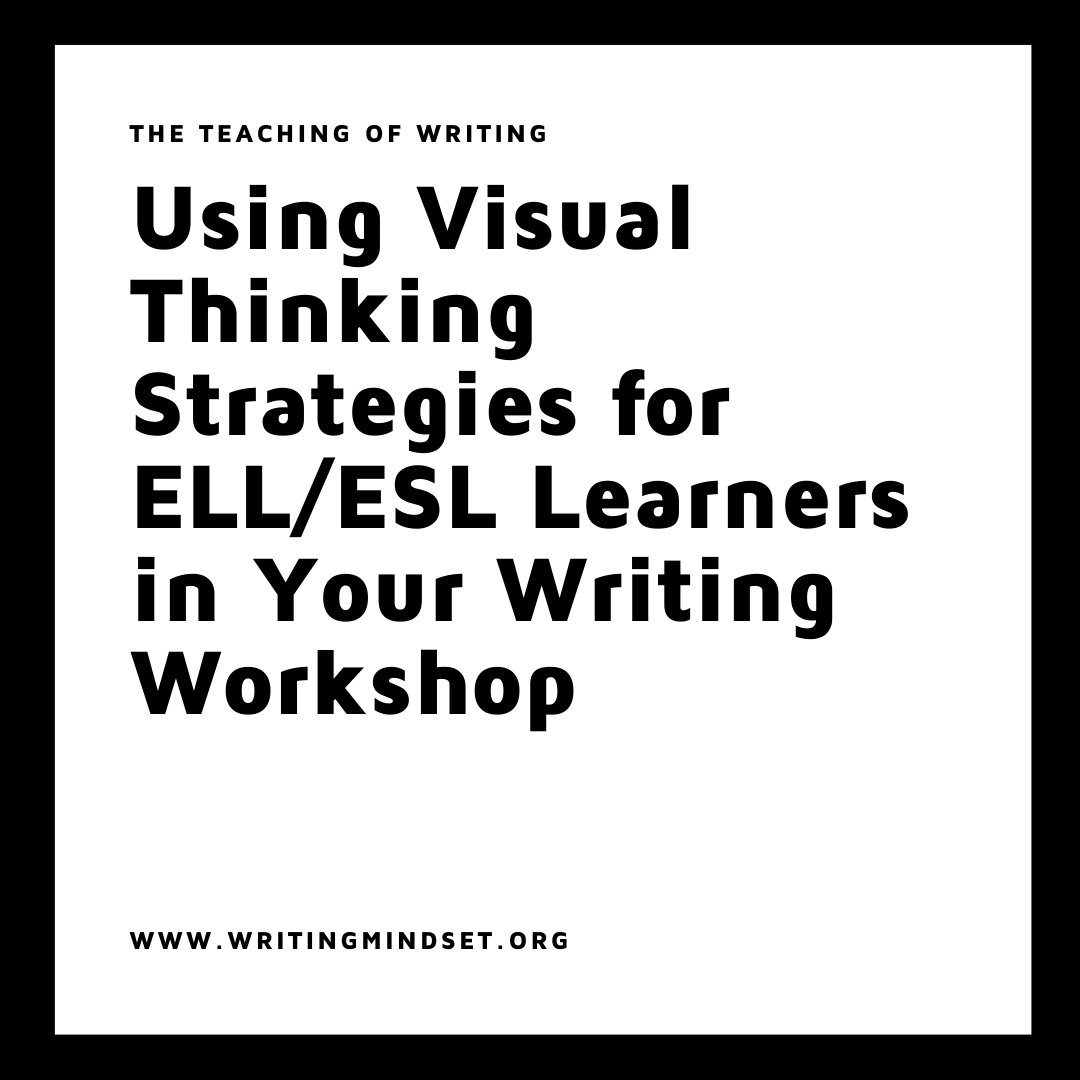Using Visual Thinking Strategies for ELL/ESL Learners in Your Writing Workshop
Visual Learning for All Writers
Coming off of the 2017-2018 school year, one of the areas that I know I need to read more on, reflect on more, and gain strategies on is working with my English Language Learner students. I attended a SIOP or Sheltered Instruction Observation Protocol training last week and took away a few strategies. I was also left with wanting more areas of ESL instructional strategies to be taught more directly to teachers; this will be more to come in another blog post. One strategy that I immediately took away from the training was the use of Visual Thinking Strategies.
What is VTS?
Visual Thinking Strategies or VTS is a way to demonstrate thinking. All students can participate because it is visual, especially students where English is a Second Language. The simple strategy involves projecting an image, demonstrating or modeling thinking, allowing students to analyze the image, and holding a brief classroom discussion around the image.
There are thousands of images that can be used for this strategy, I talk about how I used the New York Times website below, but another great resource is National Geographic Photography. At the training, teachers were talking about keeping images in binders and filing cabinets, while many of them were talking about how to keep these digitally to use. Kelly Gallagher also recently tweeted out how he uses images to building thinking skills in his classroom for reading:
Resources:
Visual Thinking Strategies Home Page
Education World "How to Teach Visual Thinking Strategies to Your Students"
Milwaukee Art Museum Teacher Resources
Plan for Summer School
In my plans for teaching summer school, I knew immediately a natural place to adopt VTS would be at the start of writing workshop for brainstorming. However, it also has a natural place in the Reader's Workshop by teaching valuable questioning skills. After I browsed the web for different lesson ideas for visual thinking strategies, I landed upon the New York Times "What's Going On In This Picture?" page. They publish pictures for students, have students comment, and then later post what was actually happening in the image. All images in my google slides are taken from the NYT website. The way that I structured my lessons were to tie them to the plan that was going on that day. Specifically, we are going to be talking about theme or point of view for example on the days that are so labeled. The three main questions to ask with each picture are:
What is going on in this picture?
What do you see that makes you say that?
What more can you find?
I also like to add one more on to make sure that students are aware of the reading or writing focus for the day. My plan also includes to offer sentence stems or frames for my struggling writers such as, "I see____ in this picture" and "One thing that makes me say that is___" to help students form their thoughts.
Writing Workshop Applications
There are countless ways to incorporate the use of images in writing workshops (and reading workshops). Using the idea of the four basic components of the writing workshop, here is a breakdown of potential uses for VTS in each area. For inspiration in daily writing workshops, I use Barry Lane's The Reviser's Toolbox as a guiding teacher text. This was first introduced to me by elementary teachers at writing camp in the summer; however, it provides a great common language for a sixth grade English teacher to use with students that translate to writing we expect at the middle school level.
Part 1: Mini-Lesson and Part 2: Writing
Any direct instruction can use an image to convey what is the focus of that lesson for the day. For example, you can use an image with the following lessons:
Write Leads to Photos
Title an Image (Ways to Title a Story)
3 Act Story Exercise-3 Acts to an Image
Sensory Details
Character Description/Traits
Point of View
Conflict
Setting
Main Idea/Details
The inspiration for Dialogue (Like Pixar Shorts...)
Snapshots
Thoughtshots
Exploded Moments
Create a Newspaper Article to an Image
Part 3: Conferring and Part 4: Sharing
Use sentence frames from VTS to guide conferences with students.
Help students elaborate by asking individual questions about the projected image.
Students can share their writing while the image is projected behind them.
Multiple students can respond to one image and share it.
Using the point of view as the focus of the lesson, you can have different students write from different perspectives from the text.
Gallery walk of student responses to images.




